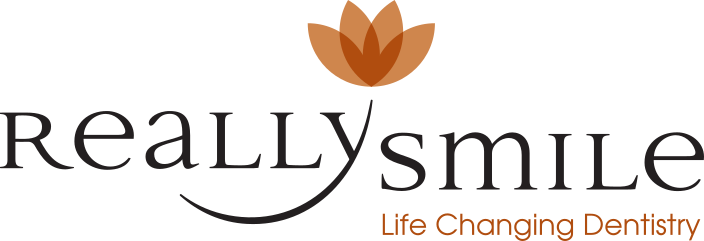- Do you have headaches frequently, coupled with fatigue in the face and jaws?
- Do you find it difficult to open, or even close, your mouth?
- Are you plagued by what seem to be unexplained but severe toothaches, earaches, or pain in your neck and upper shoulders?
These may be a sign that you are suffering from a devastating disorder called TMD. TMD stands for Temporomandibular Joint Disorder. An estimated 3 million diagnoses are made annually in the US, but despite how common TMD is, making a proper diagnosis so that treatment can begin can be difficult, because TMD looks very similar to a number of other problems.
Your dentist at Really Smile (in Carmel, IN) has the tools, the team, and the talent needed to determine if your issue is TMD and can provide therapies and treatments that will help control your symptoms, and possibly even end them forever.
TMD is also sometimes referred to as TMJ, but this is incorrect; TMJ is the abbreviation for the temporomandibular joint itself. The TMJ is a ball-and-socket joint that allows your jaw to move up and down, as well as side to side so that you are able to chew, talk, or yawn (for example).
Why Is A TMD Diagnosis So Difficult?
Diagnosing TMD can be a challenge because it can look like a lot of other disorders and diseases, some of which may even be more serious than TMD. To avoid treating you for the wrong problem, a TMD diagnosis must be very accurate.
TMD Looks Like…
TMD shares symptoms with the following diseases and disorders:
- Hypokinesia or Hyperkinesia (abnormalities in jaw movement)
- Scleroderma (chronic hardening of the skin)
- Inflammation of the salivary gland, arteries in the temple, and/or the muscles
- Trigeminal neuralgia (facial pain, discomfort, numbness, or spasms)
- Calcification of the muscles (formation of bone outside the skeleton)
- Symptoms caused by cancer of the nasopharynx (the uppermost part of the throat)
- Lyme disease
TMD symptoms can also appear to be much more mundane issues, such as a sinus infection, earache, or a toothache.
How Will My Really Smile Dentist Make My Diagnosis?
Your dentist will first want to take a deep look into your general medical history, as TMD symptoms might be a complication of another problem you have already, or a problem that you might have overcome in the past.
Once other possibilities are eliminated, your dentist will then evaluate the movement of your jaws. Your dentist will examine your bite and your facial muscles. Obvious signs, such as pain (with a specific movement), the audible popping or clicking sound that is often associated with TMD, and any abnormalities in the behavior of your jaws (such as a tendency to “lock up” in either the open or closed position).
Really Smile has invested in some of the most advanced imaging technology available in dentistry today. Instead of 2-D conventional x-rays that only provide a limited view of your masticatory system (the muscles, tissues, and bones involved in the movement of the jaws), your dentist will use a Cone Beam Scanner.
The cone beam scanner is an evolution of the x-ray machine. It takes multiple x-ray images of the area being examined while rotating a full 360 degrees. These images are combined into a three dimensional single image. This image provides greater visibility, and because it is a digital image, your dentist is able to better manipulate, store, and if necessary, transmit the image to the rest of other healthcare professionals.
Why Should I Choose Really Smile for My TMD Diagnosis and Treatment?
Many dentists can treat TMD, but at Really Smile, your dentist, Dr. David Smith, is a specialist in the field of neuromuscular dentistry. Neuromuscular dentistry is the study of the masticatory system, and a specialist in neuromuscular dentistry can provide treatments that work faster and more effectively than others might.
Neuromuscular dentistry goes beyond just the teeth and gums; it encompasses all the body’s symptoms. The goal of neuromuscular dentistry is to align the jaw properly; when the jaw is in proper alignment, a number of problems including TMD but also the symptoms of sleep apnea. These two common but serious disorders can be linked, and Dr. Smith is an expert in treating them both.
I’ve Had Frequent Headaches, Earaches, and Other Pain For Years.
Then there’s no time like today to finally put a stop to it! TMD can last years without proper treatment. To treat your TMD, your dentist may prescribe the use of an oral appliance (similar to a mouthguard), exercises, and even changes to your lifestyle; the goal is to “retrain” your jaws to reach their correct alignment. When this is achieved, you will notice a dramatic decrease in the severity of your TMD symptoms (if they aren’t eliminated entirely).
Call us today to make your appointment! Dial 317-597-8748 to reach our front desk, or use ourhandy online appointment form to book your visit right now!
Visit Our Office
Carmel, IN
12188-A N Meridian St, SUITE 355, Carmel, IN 46032
Email: Jayda@reallysmile.com
Request An AppointmentOffice Hours
- MON7:45 am - 5:00 pm
- TUE8:00 am - 3:00 pm
- WED7:00 am - 3:00 pm
- THU8:00 am - 3:00 pm
- FRIClosed
- SATClosed
- SUNClosed






